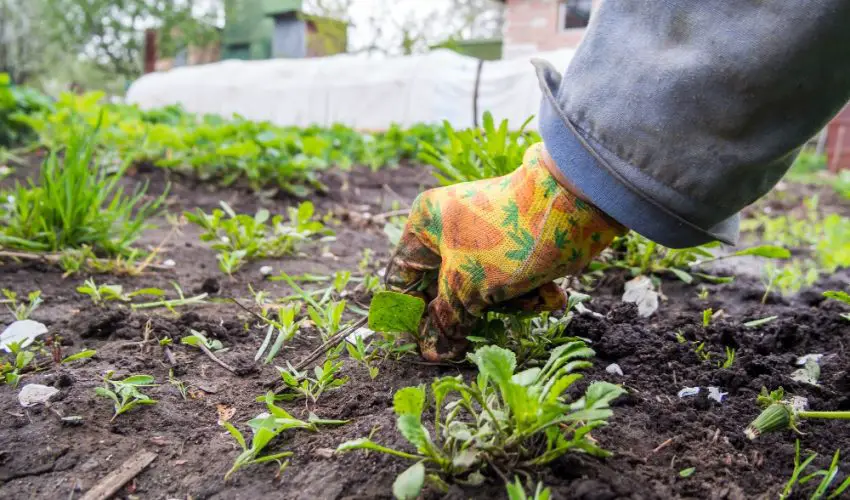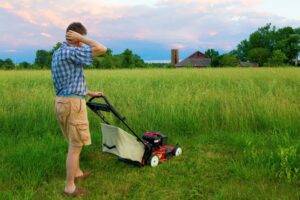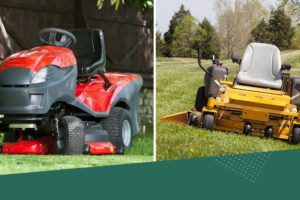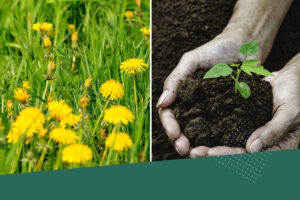It is not easy for weeds to spread to a place where the grass is thick because the grass roots are already using up the soil. Anything that keeps your grass healthy makes it hard for weeds to grow. Weeds will find it hard to compete with grass if you water and occasionally fertilize your lawn.
Table of Contents
ToggleWhen removing weeds, the ticket is to make sure the weeds stay dead. If you are removing the weeds manually, with some simple tools, or with a tiller, you must remove them completely as a piece of the root may be able to regenerate the whole plant. It is easier if you use chemicals or use a plastic sheet to smother the weeds.
Is it Ever Ok to Plant Grass Before You Kill the Weeds?
The simple answer is no. You won’t get good results that way; it is clearly better to remove the weeds first. You need to prepare your lawn before you plant grass seed. First, do weed removal, then use fertilizer, and then plant your grass seeds with care.
How to Kill Weeds Before Planting Grass
One surprisingly effective and underrated method is to use a plastic sheet to kill weeds. A lot of the time, the weeds will stay dead if you do this. You can place a plastic sheet over the weed to smother it. The sun’s heat will be trapped under the sheet, overheating and killing the weed.
First, mow the area where the weed is. Cut the grass and everything else as close to the ground as possible. Then, use a rake to remove the plant material and throw everything away. There should be as little left between the plastic sheet and the ground as possible.
For best results, you should even till the soil six or more inches deep before you put the plastic sheet down. The sheet should lie flat on the dirt, not be held up by grass or anything else. Rake the ground smooth, and water the ground down to a foot deep.
After fully preparing the ground, lay the black plastic sheet over the ground where the weeds are. The sheet should be black (or lighter colored but opaque) so that it is dark underneath. If the plastic sheet is too light-colored and too thin, the light will get through, and the weeds may survive.
The black sheet method is one of the best ways to kill weeds without using chemicals. It will often make your weeds stay dead. No plants will likely survive six or eight weeks under a plastic sheet in the hot sun. To make sure the plastic sheet doesn’t blow away, use stones or bricks to hold it down.
You can use the smother method in the spring or fall; it doesn’t have to be in the summer. If you use the plastic sheet method in the late spring, you will be able to plant grass in the middle of the summer. If six or eight weeks is too long, you might use chemicals or remove the weeds manually.
Use Chemicals to Remove Weeds
If you have tried the plastic sheet method before and found that it didn’t work, you will need to use chemicals. You can also use chemicals if you need to get rid of the weeds fast. Chemicals are the easiest way to get rid of weeds before you plant grass, but they are not entirely safe or good for the environment.
Look for a type of weed killer that contains glyphosate and kills weeds in general, not just a specific kind. Since you want to plant grass right after you kill the weeds, you need a chemical that won’t linger in the soil for too long.
When glyphosate goes into the soil, it becomes inactive and won’t kill the grass after you plant it. If you plant grass too soon after using harsh chemicals, the grass might die.
Spray weeds that are growing and above ground. Don’t spray the weeds on a windy day or a cold one. Sometimes you can plant grass in a few days (the chemical does not last long in the ground), but you might wait for the weeds to die first, which can take a week or two.
For the sake of safety, there are a few things to keep in mind:
Never reuse a container, not even if you wash it out first. The chemicals are potent, so don’t store anything in an herbicide container.
Make sure your children and anyone else in your household know that you have used weed killer and that they should stay away from that area. Keep pets safe.
Does Removing Weeds by Hand Ever Work?
While this is usually less effective and more time-consuming than other methods, it does work sometimes. If you use a tool to loosen the land first and then pull the weeds out by hand, removing the roots and everything else, you might get rid of some types of weeds.
Some types of weeds are harder to get rid of than others, so manual weed removal might not be good enough. Some weeds are very resilient and always seem to come back. If the weed can regenerate from a piece of root that is left in the ground, you will need to do more than pull the weeds out by hand.
Can You Use a Tiller?
Yes, a rototiller can work. Cover the area where the weeds were, plus somewhat more to make sure you get all of the roots. Make sure you go deep enough into the ground.
Using a tiller isn’t the most effective way, but it can work if you do the job very thoroughly. If you don’t want to use chemicals, it is faster than using a plastic sheet, although less likely to kill weeds completely.
After removing all of the roots and plant parts you find, go over it a second time with the tiller to make sure you get everything and remove all the plant material you find a second time.





